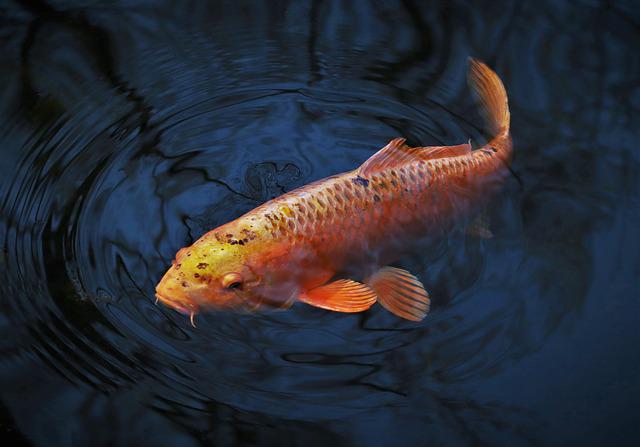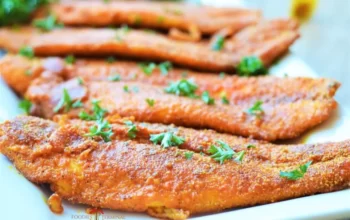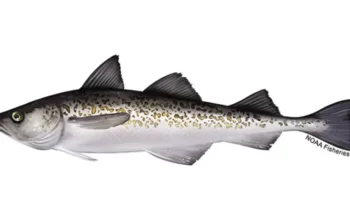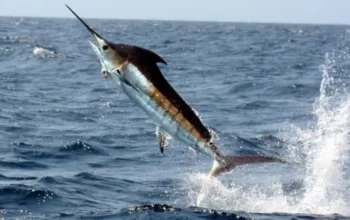Fish called carp are omnivorous. What do carps eat?
Aquatic plants like planktonic crustaceans, aquatic plant seeds, insects, including their larvae and pupae, fish eggs, and smaller fish, such as zooplankton, are among the many different types of food that carp consume. Carp consume a variety of foods. Carp consume algae and other plants in addition to insects, crustaceans, mollusks, and aquatic worms.
Carp have a very varied diet and are able to eat a wide variety of foods. Let’s take a closer look at what carp eat in the wild, as well as some popular bait types that anglers use
Please continue reading as I explain the specific information in the post.
Table of Contents
What Do Carps Eat?
Carps come in a variety of varieties and go by different names, such as grass carp, common carp, and silver carp. This species goes by many different names in North America, Europe, and Asia.
Rohu is one of the most popular carps eaten in India and is a very well-liked fish worldwide. The most common and widely consumed fish for home cooking worldwide is common carp. An omnivorous fish is the common carp. Carps consume a variety of foods, including planktonic crustaceans, seeds from aquatic plants, insects, including their larvae and pupae, fish eggs, and smaller fish, as well as zooplankton and insects. The diet of carp is varied. In addition to algae and other plant matter, carp also eat insects, crustaceans, mollusks, and aquatic worms. For their freedom of movement and feeding, the temperature does not need to be below. Carp feed in their natural environment, and it is interesting to note that they occasionally operate near the surface, consuming mosquito or midge larvae as well as drifting plant debris and algae. They also eat bugs that occasionally end up in the water as well as terrestrial insects. Humans can eat carp.
How Much Do Carps Eat?
Carp tend to eat frequently and in large quantities because they are such a large fish. The common carp can grow to an average length of 15.75 to 31.5 inches and a weight range of 4.5 to 31 lbs. However, some have even reached weights of 100 lbs. It is frequently believed that they graze on such a wide variety of foods because of their large size and high caloric needs.
Carp will consume about 2% of their body weight, like the majority of other fish. Certain species, however, significantly outnumber this estimate. The daily food intake of an Asian carp can range from 5 to 40 percent of its body weight.
How Do Carps Find Food?
Carp do consume a wide variety of foods, but they can be picky about what they ingest. Carp are frequently observed eating naturally occurring food in their environment and then spitting it all back out. Carp will do this continuously as they assess whether the items they find are edible.
Particularly common carp make excellent foragers. Certain traits help them in their search for food and ability to determine whether something is edible.
They also have teeth in their throat. These teeth, referred to as pharyngeal teeth, are similar to molars and help in the crushing of food items like snails, seeds, and plant materials.
Also present on carp are two barbules, which protrude from the mouth region. In addition to the support offered by these teeth, these aid in their ability to consume a wide variety of food.
These barbules have a high sensitivity to water-soluble chemical detection. They might even alert the fish if the food in question contains any nutrients.
What Foods Do Carps Eat During The Winter?
Carp lose their energy and activity level in the winter. This is because as the temperature of the water drops, so does its metabolic rate. They start to digest less quickly as a result. As a result, they are not particularly active feeders during the winter.
They still eat the same kinds of food, but they consume different amounts of it. Carp will still be able to eat within a 24-hour period, but not nearly as much as they do in the summer.
What Do Carps Eat In The Wild?
Carp is a flexible feeder that eats a variety of things. Anglers take advantage of these habitats to catch fish because once a carp discovers a food source, they frequent the area frequently and develop a habit of searching there for food. Freshwater fish known as carp are indigenous to Europe and Asia.
Since wild carp are so large, they must consume a lot of food frequently. Perhaps this explains why there is such a wide variety in carp food. One excellent example of a food source for carp in the wild is aquatic vegetation. The aquatic vegetation at the bottom of the pond is frequently disturbed whenever the carp eat voraciously, and the plants that the carp eat can be seen floating on the water’s surface. Carps consume the main plant, the roots, and the seeds as well as the nearly decomposed plant matter, known as detritus, which accumulated on the surface of the water bodies and provides food for carp. Dragonflies, damselflies, and other insects, as well as the edible flesh from mussels, are additional sources of food for carp. Carp frequent areas with large amounts of nuts or fruits. They also feed on leeches, sucking them up in the water because they are bottom feeders, as well as crayfish, crustaceans, frogs, and snails.
In A Pond, What Do You Feed The Carps?
Carp are omnivores and frequently eat animal food like water insects, larvae, worms, mollusks, and zooplankton. It has been discovered that zooplankton consumption predominates in fish ponds with carp and high zooplankton densities. In a fish pond, carp primarily eat algae, weeds, insects, leeches, and worms.
Carp in the pond eat a variety of foods. They can be observed eating mollusks, crustaceans, insects, and aquatic worms. In addition, they enjoy eating algae and other plant matter. Carp have a wide range of food sources, so there are many different types of baits available, from natural baits to homemade dough baits. Additionally, people buy ready-to-eat food from the market that is referred to as carp food for angling as well as soft baits, boilies, sweet corn, corn, and seeds. When there is a high population density, the carp eat algae and plants very quickly, which reduces the amount of vegetation in the area because growth is slower but the feeding rate is higher, which is bad for the environment. Your pond can be cleaned by a grass carp. The ability of grass carp to remove food that has become stuck in ponds and aid in pond cleaning has been noted by many owners. Carps consume numerous other small fish in the pond, as well as occasionally aquatic insects. The Grassa Carp is very simple to spot in the pond since it cleans the entire body of water by consuming all the plankton and algae that are present. A fisherman can use a variety of artificial foods because they are tasty.
How Carp Feed?
After a carp has successfully waded through the silt in search of a snack using its amazing food-finding tools, such as its barbels and crazy fin taste buds, the next step is fairly simple.
Using its vacuum-like mouth, a carp can simply suck up the debris—and hopefully the snail—into its mouth if it detects, say, a snail in the silt.
When feeding on the bottom, carp ingest a lot of inorganic material, such as mud, dirt, and other debris. This causes the carp to hold large food items in its mouth using special lumps before spitting out the unwanted debris.
Carp use a cross filtration technique for smaller debris like dirt and other fine particles that are undesirable for consumption. This technique allows lighter food particles to stay in their mouths while filtering the undesirable debris through their opercular slits.
The food is trapped between the roof and the bottom of the mouth by a second tool that a carp has, which is essentially a taste organ. Anything caught by this food organ that isn’t a snack is simply filtered back through the gills like silt or, if it’s too big to filter out, spit out.
Carp suck up larger food, like your boilie, and hold it in their mouths while pumping water around it to remove any dirt and debris; this process only takes a few seconds.
They move the item back towards the front of their mouth to repeat this cleaning process after they’ve tasted it and decided it’s a tasty snack. From there, the food is broken up by the teeth mentioned earlier as we move into the throat, where it is further tenderized. This process is also very quick, taking only a few seconds.
Carp actually have a pretty good memory, so if the nutritional snack they are sensing is something they have seen before, “like a boilie attached to a hook,” they may choose to ignore it because they will be recalling what happened the last time they tried to eat that particular flavor.
Read the entire post on how carp feed to learn more about their feeding techniques. You can also watch the video below to see a carp feeding in action while it’s underwater. See more about What Is Deep Sea Fishing?
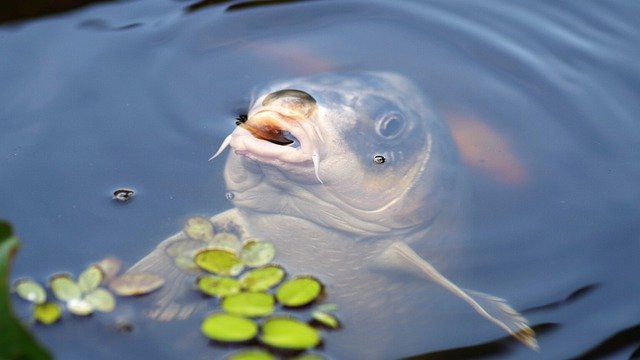
What Exactly Are Carp Boids?
As previously mentioned, the majority of species of carp are omnivorous and do not have particular food preferences. except during spawning. So, …
Carp boilies are common bait used for carp fishing made of fishmeals, bird food, protein, flour, and other ingredients which are connected with eggs to make a hard paste that can be shaped, boiled and used as bait.
Carp boilies can be purchased in fishing shops, but many anglers make them from scratch.
Boilies come in a variety of buoyant and sinking varieties. For small carps, which feed at the bottom, sinking ones are ideal. Even though big fish are cautious, neutral buoyancy fish are a good starting point because big fish are more picky.
They are also made in different colors …
You should choose a color based on whether you think the water will be clear or murky. Additionally, it depends on the depth; the lower you go, the darker it becomes. Remember that colors appear a little bit differently underwater. White or pink are the most noticeable colors underwater. Blue and green blend in with the background rather well. For both, yellow might work. All colors, including fluorescent ones, are abundant.
Carps eating habits differ in different times of the year.
Boils with more sweetness are preferable in the winter, while those with a stronger aroma are better in the summer.
What Makes The Best Bait For Catching Carp?
The best and most productive method for catching carp is with a baited hook. There are numerous options to consider when deciding which bait will work best for a particular species of fish. Fishermen experiment with a variety of options, such as artificial insects, garden worms, minnows, and chunks of raw fish, to entice the fish they are trying to catch. Unless you’re trying to catch grass carp, you can use just about anything for the bait including grasshoppers and dog food.
Here is a summary of best bait to use for different carp species:
Common Carp
The best bait for common carp is boilies, mollusks, and artificial corn, though they would be drawn to just about anything. To make any kind of bait more alluring, it is also advised to sprinkle a little salt on top.
Leather Carp
Any species of carp, but especially leather carp, which adore corn, can be lured with corn. You might also take into account buying ready-made boilies off the shelf.
Ghost Carp
Insects are one of the ghost carp’s preferred foods, but they also primarily consume plant matter like grass carp do. In addition to crawfish and benthic worms, fish eggs are something they like as well.
There are other types of carp as well but they also mostly prefer anything that contains protein and is tasty and sometimes salty. For the summer and the winter, as well as depending on the circumstances, different types of bait are used.
Grass Carp
Although grass carp typically eat vegetation, conventional bait is occasionally used. The best choices consist of lime beans, cherry tomatoes, and bread dough with corn. Many people wonder how to catch BIG grass carp because they’re becoming more and more popular among anglers.
Mirror Carp
Earthworms are a favorite food source for mirror carp, according to observations. But other types of bait can also be used including corn floaties and bread. To attract large carp, some fishermen season their bait with spices, especially during the winter.
Which Synthetic Carp Baits Work The Best?
Using natural bait that is present in a carp’s habitat might seem straightforward, but it isn’t always feasible. Nobody wants to search the lake’s bottom for the best bait (or maybe you do?) Thankfully, there are many different baits available on the market.
Read the list of our top 5 best carp baits if you’re prepared to catch carp and want to stop wasting time waiting for a bite on subpar bait:
Xhope TPR Simulation Fake Soft Baits
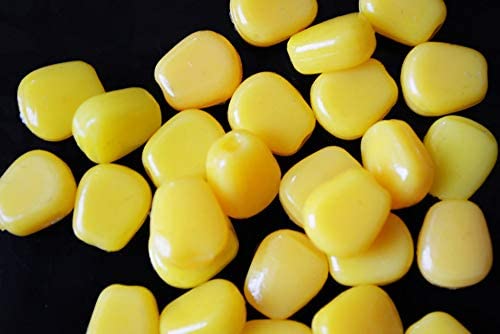
The Xhope TPR Simulation Fake Soft Baits are a great option for carp anglers because scent and appearance are two of the most crucial characteristics when selecting a bait. They have the texture, feel, and smell of corn. You can cast a ball into the water with a ball attached to the end of the line and watch as the carp quickly bite it.
These corn-like baits have the added advantage of being environmentally friendly. You must use eco-friendly fishing gear because many places forbid using corn for fishing for a variety of reasons. You don’t want to be in charge of contaminating the area with plastic if they fall off the line. Although 50 balls are available as an upgrade, each bottle comes with 30 balls.
Wicked Carp Company Hard Dough Carp Bait
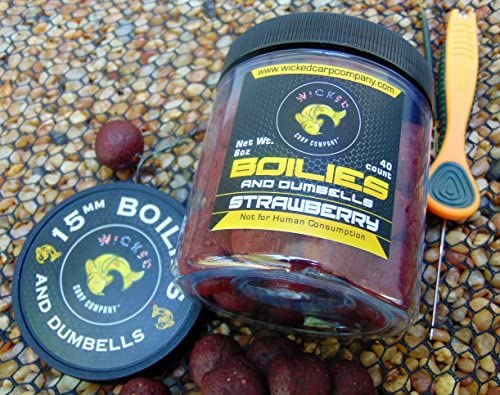
An excellent option for those who use hair rigs is The Wicked Carp Company Hard Dough Carp Bait. Don’t use this with a traditional hook. Because they taste, look, and smell amazing, these protein-rich bites are ideal for carp.
This might be one of the best options available if you’re trying to catch large carp. Everything a large carp could possibly want is in these hard dough bites. Additionally, this bait works well for catching catfish. Even with long casts and powerful reels, the packed design is intended to stay on the hair rig. Without worrying that the bait will fly off, you can cast the line with assurance.
Pro Cure Sweet Corn Scent Bait Oil
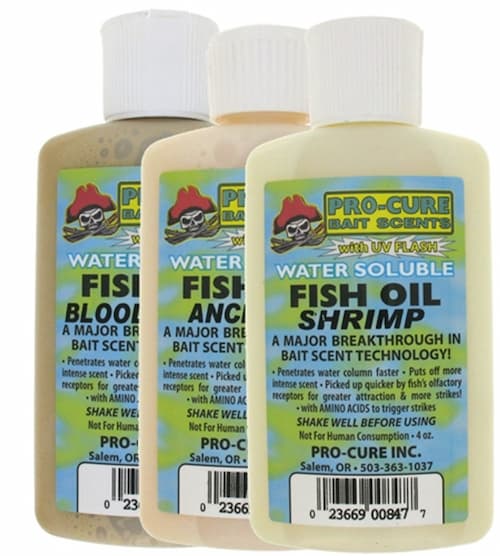
Not to mention, hundreds of anglers have found success with the Pro Cure Sweet Corn Scent Bait Oil. Use this spray to coat the bait if you have the right bait but want to make it more alluring for nearby carp. From a great distance, they will swim over!
Prior to hooking them onto the line, your baits can be injected or marinated. Either solution is a great way to increase your ability to catch carp. What could possibly be disliked about a scent that is stronger than actual sweet corn? Both experts and beginners agree that it is a great solution.
On this list, there is something for every angler, whether they prefer to use their own bait that has been scented with oil or attach imitation corn to the end of their line.
When you’re fishing for carp, something as simple as switching out your bait can make all the difference.
Magic 22-24 Carp Bait
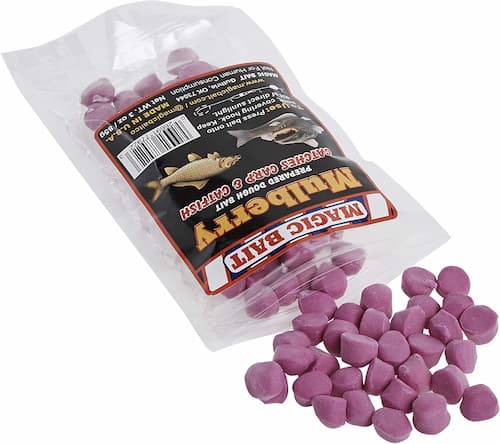
The Magic 22-24 Carp Bait should be among your top choices if you want to quickly hook some bait on your line and begin fishing. This bait is as simple to use as they come. Take one out of the pouch, fasten it to the hook, making sure to cover the entire point, and then cast the line into the water.
These tough baits are designed to withstand strong currents, long casting, and forceful reeling. They are a fantastic option for both small and large carp due to their size.
Phecda Sport Smell Carp Fishing Bait Boilies Eggs
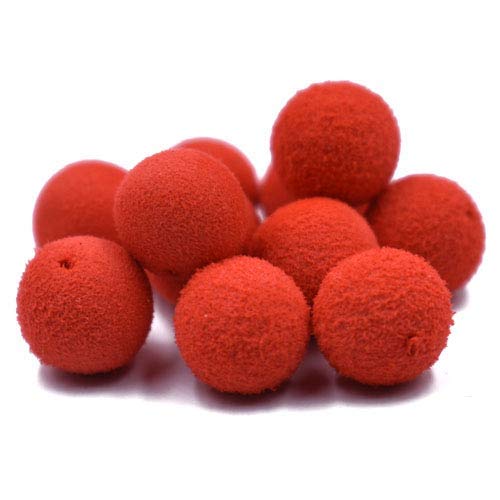
Sweet corn, strawberry, sweet potatoes, and apple are some of the different scents available in the Phecda Sport Smell Carp Fishing Bait. You can choose one because they are all colored differently.
From below the surface, carp are drawn to these floating balls. Therefore, you will see them before they bite if you cast close to the dock or your boat. Put them in a bath of your preferred bait scent (we’ll talk about one in the section after this), or use the stock scent.
Tips For Fishing Carp
You can reel in these adaptable fish by following our seven straightforward tips:
Finding The Perfect Location
Carp prefer murky water because they tend to avoid clear water because it makes them frightened. Look for muddy water with dense vegetation near the shoreline, backwaters, and side channels because these fish also prefer warmer waters. The majority of the time, carp are found among aquatic vegetation, eating insects.
The best time to spot carp is in the early morning. You can spot the typical muddy water and wake from fish movement along river banks.
Choosing The Right Bait
Carp are omnivorous, meaning they will consume plankton, insects, larvae, as well as tender plant stems and river weeds, making carp baiting relatively simple. For the majority of carp anglers, boolies are the go-to bait. Carp go crazy from the smell of the fishmeal in the boilies. However, carp in frequently fished areas might associate boilies with danger and steer clear of that bait.
Fortunately, there is a cheaper and simpler bait that carp always strike at: sweet corn. You don’t need to fuss with a hair rig because canned sweet corn has the ideal ratio of salty and sweet flavors that carp find irresistible. Additionally, corn kernels are simple to thread directly onto your hook.
Setting Up Your Rod And Reel
The ideal rod length is between 4 and 6 feet because casting in rivers is typically limited to short distances. For fishing in confined areas near shorelines and vegetation, this length is excellent. For larger bodies of water, opt for an 8-10 ft rod for better long-distance casting.
A bait-feeder spinning reel with two drag systems is the most common reel used for carp fishing. Regular carp anglers love the Shimano Baitrunner.
As it sinks well in waters with a gentle current, monofilament line is appropriate for carp fishing. However, most anglers discover that braided line is more robust and rigid, which keeps you closer to the fish.
The test weight of the line should be as heavy as possible when attempting to catch carp. To determine which line will allow you to apply the correct amount of pressure, start with a 30 lb. test line and increase the weight as you go.
Avoiding Shiny Hooks
Because of their keen vision, carp may not strike at your bait because of the glare from a shiny hook. Use dark or camouflaged hooks designed specifically for carp fishing.
Using A Rod Pod
Although carp are known to eat almost anything, they are often reluctant to eat and are easily startled. Small tremors along your fishing line can alert a school of carp to your presence and ruin your chance of landing one.
The majority of line movement can be reduced by using a rod pod or rod holder. Rod pods keep your rod at the ideal angle while allowing the line to unspool with little resistance. Additionally, multiple rod pods are available, enabling you to set up several rigs and raise your chance of getting a bite.
Chumming The Water
Chumming the water is a tried-and-true method for luring carp to the angler’s hook. There are many ways to chum the water for carp, but the key to any luring technique is to avoid overfeeding the fish. A carp that is full is less likely to take your bait.
Throwing a few handfuls of the bait you’re using on top of the water where the carp are feeding is the simplest method for chumming. If you’re using boilies, you might need to lightly crush them for better distribution.
Using mesh or dissolveable PVA bags with chum inside that are attached to the rig and submerged in the water is another well-liked technique. To conceal your hook, bait, and break, you can make your own pack bait using sweetcorn, jello, and breadcrumbs. To chum the area, pack bait slightly separates in the water.
Trying Bowfishing
Carp bowfishing is a fantastic way to mix up your typical fishing routine and increase the level of difficulty on your trip. Due to their preference for mid-level depths near the river bank or lake shoreline where bowfishers can aim precisely, carp are one of the most sought-after fish among enthusiasts of the sport. You may have to wade into the water from the bank if you want to fish in the best spots, which are frequently the hardest to reach by boat.
The Bottom Line
As you can see, carp are not picky eaters, but they occasionally choose their food carefully. Carp have some incredibly advanced tools at their disposal to sense and find food, as you can also infer from the introduction to this article.
This is crucial information for anglers to understand because it enables us to select the best techniques for providing bait when pursuing the chunky lake piggies.
Finally, I want to thank you for reading.

